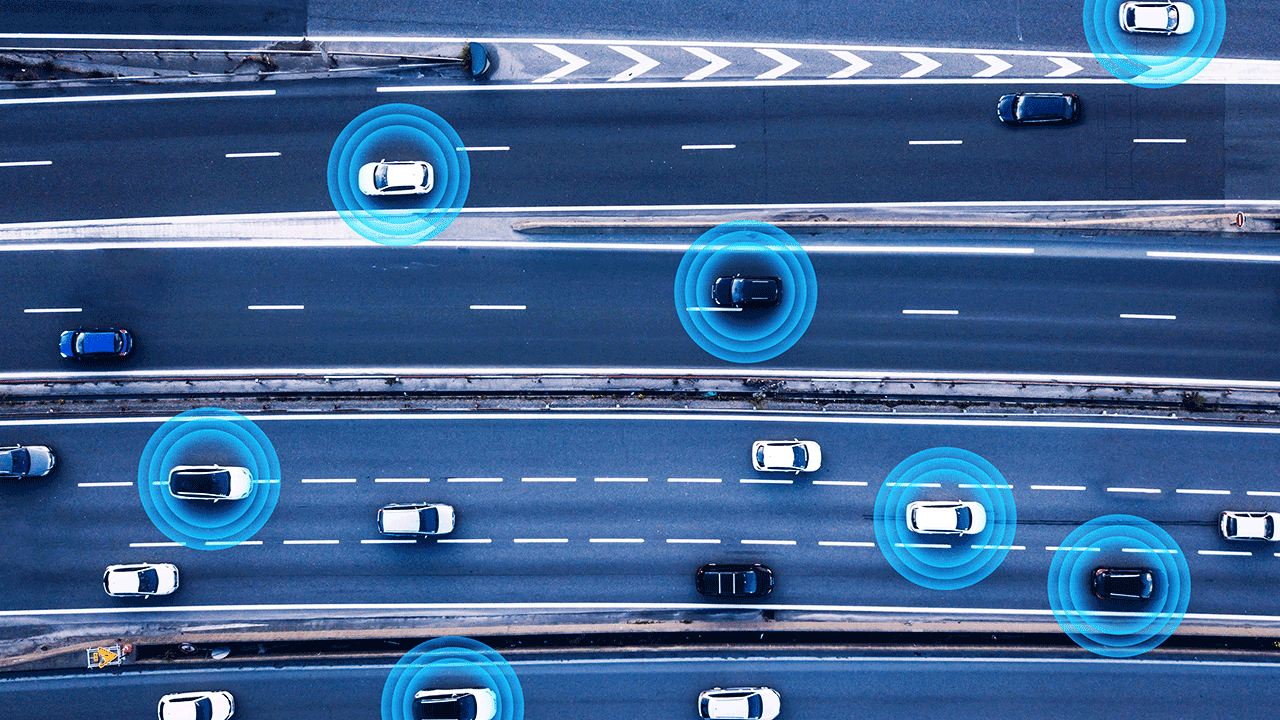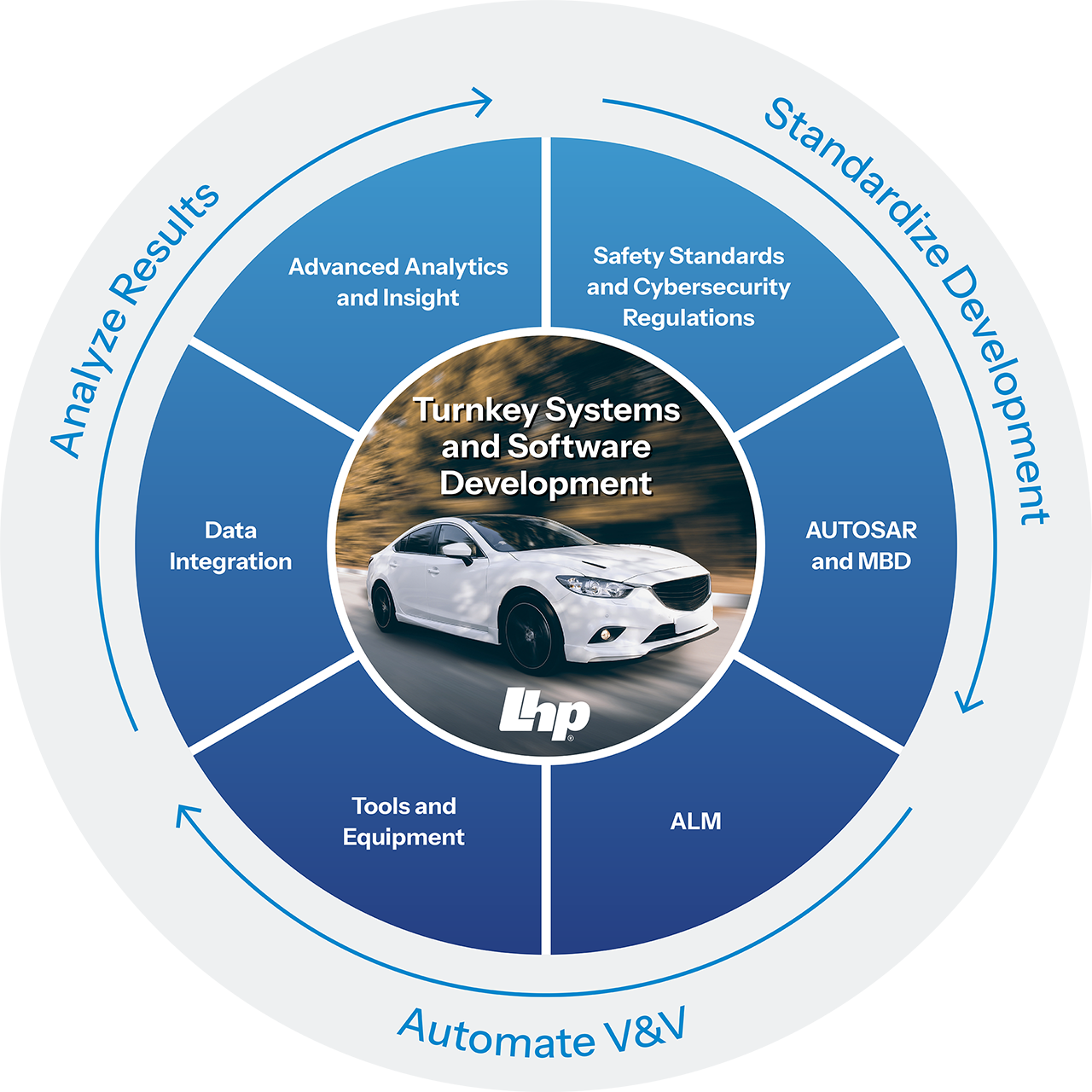Why is Safety at the Core of Software-Defined Vehicles?
Why is Safety at the Core of Software-Defined Vehicles? Creating technology can be a complicated and time-consuming process. At LHP Engineering...
Unlock Engineering Insights: Explore Our Technical Articles Now!
Discover a Wealth of Knowledge – Browse Our eBooks, Whitepapers, and More!
Stay Informed and Inspired – View Our Webinars and Videos Today!
Exploring the future of software-defined vehicles through expert insights.
7 min read
 Steve Neemeh
:
May 10, 2023 3:31:58 PM
Steve Neemeh
:
May 10, 2023 3:31:58 PM

In terms of independent commuting, autonomous vehicles (AVs) can potentially reduce traffic accidents and save lives, besides providing mobility or added mobility to those who are extremely limited now. Autonomous vehicles promise greater efficiency in commuting times, increased driving safety and accident avoidance, and even possibly lower fuel consumption and air pollution, as algorithms producing faster routes, would also minimize the time each car spends idling at a stoplight, or in a traffic jam. Automakers and their suppliers still have to figure out how to build and maintain trust in the autonomous driving industry, because even with these promised benefits, consumers are still hesitant to embrace this technology fully.
Despite the numerous benefits and the multitude of companies rushing to bring vehicle autonomy systems and artificial intelligence (AI) to market, there’s still a fairly high level of distrust among consumers. People tend to expect much higher safety performance from AVs than from other similar technology, and distrust AVs more than human drivers, even when the AV is safer than a human. This creates a problem for an industry built on a product with great potential but, currently, a fairly small market. How can these companies build trust among consumers in the autonomous driving industry?
Consumers tend to forget, in the wake of bad news in the headlines (or their social media feed) that we trust and use autonomous devices all the time. Autonomous and semi-autonomous devices are all around us daily. A cloud-connected voice-activated device, so common in today’s homes, is not nearly as complex as a modern car, but it can connect to other devices in a home (or car, for that matter) and initiate some activity. An autonomous home floor cleaning robot’s sensors and object avoidance network are not as sensitive, complex, or expensive as, say, those in a modern electric vehicle, but a robotic vacuum isn’t required to negotiate heavy traffic at highway speeds.
Both voice-activated smart assistants, and robot vacuum cleaners, use AI to perform tasks at a certain level of autonomy, and they are only two of the numerous autonomous or semi-autonomous devices we interact with constantly throughout our day. Many modern cars are likewise already at a certain level on the scale of automotive autonomy. If consumers realize how much they already rely on the technology of autonomy, how much autonomous technology is really already inside the cars and trucks they drive today, they may let go of some of their particular distrust of AVs.
Autonomy is using AI coupled with the multiple systems located throughout a car to control some or all the aspects of operating that car. When using autonomous driving technology, the driver can rely on the integrated AI for assistance in some situations while driving the car, up to and including fully operating the car with no input from the person in the driver’s seat. Automation in automobiles is rapidly ramping up and could be worth hundreds of billions of dollars in the coming years. LHP is here to help your company learn how to build trust in the autonomous driving industry.
Some of the key technologies autonomous vehicles use are also technologies we find in other devices and industries. For example, Global Positioning Systems (GPS) have been in use in cell phones and car navigation systems for decades. They use satellites to relay the vehicle’s position.
Various sensors, such as Ultrasonic sensors, Radio Detection and Ranging (RADAR), Light Detection and Ranging (LIDAR), high-definition image sensing cameras, and infrared sensors, are used for object avoidance at all speeds, like in backup warning systems, lane detection, interval detection, and hazard avoidance, even in cars with no driver assistance. As those technologies exist now, all had military applications before they found use in autonomous vehicle systems. Prebuilt maps have been part of unmanned and semi-autonomous vehicles’ repertoire of technology since the beginning. Inertial Navigation System (INS) technology is similar to that used in plug-in devices insurance companies use (along with GPS) to monitor driving and adjust rates. Artificial Intelligence interprets inputs from these sensors and information systems, determines a safe course of action, then collects and reviews further input afterward. AI, of course, is also used in voice-activated smart assistants, robotic vacuum cleaners, and many more everyday devices.
AVs offer the best chance at reducing automobile fatalities and dropping the number of accidents. The neural network of AI-controlled sensors, cameras, and GPS, plus short-wave communication with other AVs and the infrastructure, all collaborate to move the AV smoothly through traffic. This same network plots the most efficient and timely path to each destination for each connected vehicle, thereby decreasing commute lengths as well as the risk of accidents during the commute. Autonomous vehicles can provide mobility options to urban families with members too young to drive, or to people with disabilities or mobility issues that prevent them from handling the controls in a non-autonomous vehicle. AI also assists in maximizing fuel or battery power management in the vehicle, meaning those power sources will last longer, providing greater miles per gallon or per charge.
What is the scale of autonomy? The organization formerly known as the Society of Automotive Engineers, SAE International, produced a standard in 2014 called J3016. This standard was meant to establish a system or scale of categories within the broad area of vehicle autonomy. The levels go from 0 to 5, which at first glance might lead one to believe there are only 5 levels, but there are actually 6, if you count level 0. Here’s a breakdown of the 6 SAE International Driving Automation Levels, with what’s expected of the driver and the car at each stage:
|
SAE Level |
Examples of features at the level of automation |
Classified as |
Human Driver Requirements |
|
|
SAE Level 0 |
Momentary warnings, like lane departure and blind spot. Also, emergency braking. |
SAE classes these three levels as “driver support features” |
The human in the driver’s seat is driving the car and is responsible for its operation. The onboard AI provides warnings but no active driver assistance. |
|
|
Level 1 |
These two feature levels: Advanced Driver Assistance (ADAS) |
Steering OR brake/accel assist: lane centering OR adaptive cruise control |
Even with AI assistance, the human in the driver’s seat is driving the car and is responsible for its operation. |
|
|
Level 2 |
Steering AND brake/accel assist: lane centering AND adaptive cruise control simultaneously |
Even with AI assistance, the human in the driver’s seat is driving the car and is responsible for its operation. |
||
Autonomous features in cars at SAE Levels 3, 4, and 5 are considered “automated driving” features. Of these, only the final level, SAE 5, is considered truly autonomous and describes an auto that can drive itself everywhere and in all conditions.
|
SAE Level |
Examples of features at the level of automation |
Classified as |
Human Driver Requirements |
|
|
Level 3 |
At these two levels, the car has features that can engage to drive the car under certain limited conditions. |
“traffic jam chauffeur” |
SAE classes these three levels as “automated driving.” |
SAE deems this level appropriate for low-speed semi-autonomous operation. The human in the driver’s seat is NOT driving the car when the auto features are engaged, but when the system requests the driver take over, they must take over the controls. |
|
Level 4 |
“local driverless taxi” |
SAE terms this level appropriate for “local driverless taxi” duty. The human in the driver’s seat is NOT driving the car when the auto features are engaged. Pedals and steering equipment may or may not be installed in the car. |
||
|
Level 5 |
Self-driving car |
This level is the only level where the car is completely autonomous and can drive everywhere in all conditions. The human in the driver’s seat is NOT driving the car when the auto features are engaged. Pedals and steering equipment may or may not be installed in the car. |
||
Manufacturers are working in and around the strict definitions of each of these SAE levels, which is to be expected in an industry that’s changing so rapidly. It would be difficult, if not impossible, for a standards body like SAE International to keep up with the very fast pace of new developments in the field of AVs.
*Further information about the SAE International levels of autonomous driving can be found at https://www.sae.org/blog/sae-j3016-update and https://www.sae.org/standards/content/j3016_202104/
The automotive industry has a further safety net and additional safety standards to hold AVs accountable. Steve Neemeh, Chief Technical Officer of LHP, spoke on some of these additional safety measures in an interview with Ed Niedermeyer of Partners for Automated Vehicle Education (PAVE).
Steve says that in certain industries, where safety within an industry is critical to overall public safety, for example, in “nuclear (energy production), medical devices… and now level 5 autonomous cars, there’s an added layer, which is infrastructure and government.” Steve spoke of the importance of Functional Safety (ISO 26262) in auto manufacturing, but also of the importance of a culture of quality within the manufacturing organization. “If (these safety steps) don’t happen, we’re going to hit the brakes,” he said. “We’re not going to ship the product.” These are the steps he is referring to:
Functional Safety may not be the only engineering control on the manufacturing process of autonomous or non-autonomous vehicles, but it is the most critical part of the solution to increasing public trust in autonomous vehicles.
As we prove that the infrastructure exists to support each of the SAE levels in their increasing complexity, then one by one, we can build consumer confidence in short simple steps. Lane centering and adaptive cruise control are now accepted autonomous driving features at SAE level 3. Once car buyers are fully confident in vehicles with level 3 autonomy, it is a short leap to level 4. While it may take time for consumers to relinquish their vestigial steering wheels and brake pedals, the “giant leap” forward to a level 5 autonomous car, able to drive itself everywhere and in all conditions, will then also seem like a short, simple step.
Building trust in autonomous cars will not be easy, but the industry is already making headway. The key will be found in the infrastructure of regulation and compliance with standards like ISO 26262.

Why is Safety at the Core of Software-Defined Vehicles? Creating technology can be a complicated and time-consuming process. At LHP Engineering...

Self-driving vehicles are coming. There’s a certain sense of inevitability. Mentions appear almost daily in the news with players such as Tesla,...

1 min read
Introduction: Paving the Path to Safe Autonomous Driving Autonomous driving has been a technological pursuit for years, with many major companies...